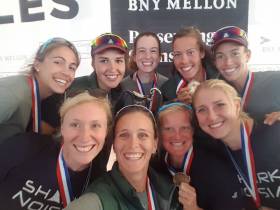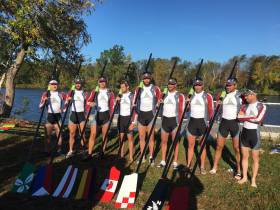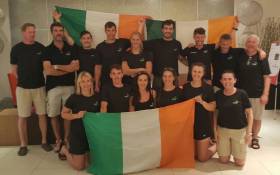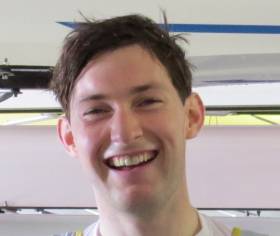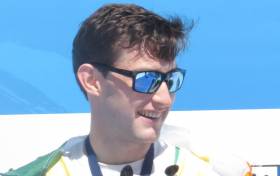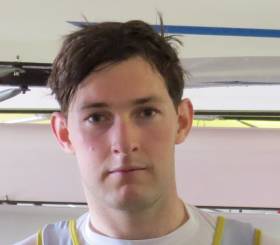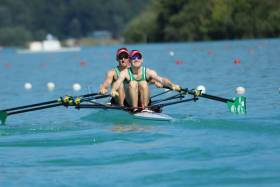Displaying items by tag: Paul O'Donovan
UCD Celebrate 100 Years in Style
#Rowing: The UCD Boat Club centenary dinner was a huge and successful occasion, with 425 attendees. Tom Sullivan (81) was the keynote speaker and gave a summation of the history of the club: not just the good days, such as the 1974 win in the Ladies Plate at Henley Royal Regatta (he was the coach), but also the tough times early on, when one of the mentors, James Meenan, said that “championships were not for the likes of us”.
Sullivan was not the only one who could look back to the middle of the last century and revel in the successes. Michael Cleary (91) rowed in the late 1940s and early 1950s. He received a special award.
Ten other presentations were made to important figures in the history of the club.
UCD Centenary Awards
Liz Cooke, Colm Daly, Johnny Devitt, Martin Feeley, Claire Lambe, David Neale, Murrough O’Brien, Jaye Renehan, Brian Sherry, Tom Sullivan.
Ireland's Great Eight Pair are Rowers of the Month
Paul O'Donovan in Great Eight of World Scullers
#Rowing: Paul O’Donovan, the lightweight single sculls world champion, ended his season on a high as he rowed in the Great8 of top scullers which took second at the Head of the Charles River in Boston. The University of California won in a record time. O’Donovan was the bowman and is seen in this picture on the left. The crew finished second, inside the old record.
Sanita Puspure was a key part of the women’s Great8 which won, and set a new record. Course specialist Genevra Stone stroked the crew having subbed into the boat for Magdalena Lobnig, who was ill.
World Rowing Gold Medallists Return
#Rowing: Ireland gold medallists Paul O’Donovan, Shane O’Driscoll and Mark O’Donovan arrived back in Ireland today from the World Rowing Championships in Florida. They flew from Orlando to Dublin where family and friends greeted them. They were accompanied by Gary O’Donovan, an Olympic medallist in 2016 and reserve for the World Championships team. This evening they will be honoured at a reception in Skibbereen.
Ireland Team the Afloat Rowers of the Month for September
#Rowing: The Ireland team which brought the country glory at the World Rowing Championships in Florida are the Afloat Rowers of the Month for September. In that month, Ireland took two gold medals through Mark O’Donovan and Shane O’Driscoll in the lightweight pair and Paul O’Donovan in the lightweight single sculls.
The pair crowned the perfect season with their victory. They won gold at the three World Cup regattas and the European Championships. The pressure was on in World Championship final, with both Brazil and Italy rowing well on the day. But O’Donovan and O’Driscoll were peerless. They set a very high stroke rate, took the lead – and saw off their challengers.
Paul O’Donovan retained the title he had taken with such an extraordinary set of performances in Rotterdam in 2016, just weeks after he had taken a silver at the Olympic Games in a lightweight double with his brother Gary. This time, Gary had to drop out of the lightweight double, as illness had restricted his training (he supported the team as a reserve). Paul was back in the lightweight single in a boat which was new to him. He won all four races (heat, quarter-final, semi-final and final), seeing off a new set of challengers in the lightweight single, including Matthew Dunham of New Zealand, who took silver, and Kris Brun of Norway (bronze).
The rest of the Ireland team also gave the suppporters plenty to shout about. Sanita Puspure went on to take fourth in the single sculls and Denise Walsh reached the A Final of the lightweight single sculls, where she finished sixth. Two new heavyweight pairs gained experience of the top level as the team targets Tokyo 2020. Aileen Crowley and Aifric Keogh finished eighth and there was a 16th place for Patrick Boomer and Fionnán McQuillan-Tolan.
Well done to all the members of the Ireland team, the Afloat Rowers of the Month for September.
Rower of the Month awards: The judging panel is made up of Liam Gorman, rowing correspondent of The Irish Times, and David O'Brien, editor of Afloat magazine. Monthly awards for achievements during the year will appear on afloat.ie. Keep a monthly eye on progress and watch our 2017 champions list grow.
O'Donovan Adds Second Gold Medal for Ireland at World Rowing Championships
O'Donovan Wins Semi-Final and Brazil Snatch Place at World Rowing
#Rowing: Paul O’Donovan took first in his semi-final and qualified for the A Final at the World Rowing Championships in Sarasota Bradenton in Florida today. The Skibbereen man came through in a race with an exciting finish. Michael Schmid of Switzerland led through halfway, but O’Donovan tracked him and drew level at 1500 metres. He passed him in the next few strokes and went on to win by over a length. Behind the two, Uncas Batista of Brazil took the final qualification spot – after Poland’s Artur Mikolajczewski completely ran out of steam approaching the line.
World Rowing Championships, Sarasota-Bradenton, Day Five – Irish interest:
Men
Lightweight Single Sculls – A/B Semi-Final (First Three to A Final; rest to B Final): 1 Ireland (P O’Donovan) 6:55.30, Switzerland (E Schmid) 6:59.04, 3 Brazil (U Batista) 7:00.47.
O'Donovan Lays Down Marker as Hrvat Capsizes at World Rowing
#Rowing: Paul O’Donovan saw off the challenge of Lars Wichert of Germany to win his quarter-final at the World Rowing Championships in Florida. The Skibbereen lightweight single sculler started well, stayed alongside Wichert in the middle stages, before pulling into a clear lead over the German by 1200 metres. From there he moved away. He won convincingly. Wichert and Lukas Radonic of Croatia took the remaining qualification places for the A/B Semi-Finals.
There was a major stroke of bad luck of Rajko Hrvat of Slovenia. He was leading the final quarter-final only to catch a crab while just a few hundred metres from the line. He capsized and his chances of contending for a medal ended.
Earlier, Sanita Puspure had won her repechage to move through to the A/B Semi-Finals of the women's single. The Ireland women's pair will compete in the B Final. They finished fourth in their repechage.
World Rowing Championships, Sarasota-Bradenton, Florida – Day Four – Irish Interest:
Men
Lightweight Single Sculls – Quarter Final Three (First Three to A/B Semi-Final; rest to C/D Semi-Finals): Ireland (P O’Donovan) 6:56.99, 2 Germany (L Wichert) 7:01.74, 3 Croatia (L Radonic) 7:04.54.
Women
Pair – Repechage (First Two to A Final; rest to B Final): 1 Britain 7:25.99, 2 Germany 7:3.34; 4 Ireland (A Keogh, A Crowley) 7:41.13.
Single Sculls – Repechage One (First Two to A Final; rest to B Final): 1 Ireland (S Puspure) 7:36.16, 2 Czech Republic (L Zabova) 7:45.98.
Paul O'Donovan Wins First Race at World Rowing
#Rowing: Paul O’Donovan won his heat of the lightweight single sculls convincingly at the World Rowing Cchmpionships in Florida. The defending champion had over ten seconds to spare over Uncas Batista, the current champion in the World Under-23 class. O’Donovan now moves forward to a quarter-final.
Earlier Mark O’Donovan and Shane O’Driscoll had also won their heat of the lightweight pair with plenty to spare.
World Rowing Championships, Sarasota-Bradenton, Florida – Day One – Irish Interest:
Men
Lightweight Pair – Heat One (First to A Final; rest to Repechage): 1 Ireland (M O’Donovan, S O’Driscoll) 6:33.20, 2 Britain (J Cassells, S Scrimgeour) 6:38.57, 3 Italy 6:40.39.
Lightweight Single Sculls – Heat Three (First Four to Quarter-Finals; rest to Repechages): 1 Ireland (P O’Donovan) 6:54.68, 2 Brazil 7:05.75, 3 Italy 7:09.88, 4 Thailand 7:17.50.
Bronze for O'Donovans at World Cup Rowing in Lucerne
#Rowing: Ireland’s Paul and Gary O’Donovan took bronze at the World Cup Regatta in Lucerne today. Olympic champions France, as has been the pattern this season, took the lead early and never relinquished it. Italy chased them all the way and took silver.
The Ireland lightweight double was in touch from early on and established themselves firmly in third coming to the line, ahead of Belgium and Greece.
World Cup Regatta, Lucerne, Day Three (Irish interest)
Men
Lightweight Double Sculls – A Final: 1 France 6:12.96, 2 Italy 6:15.43, 3 Ireland (G O’Donovan, P O’Donovan) 6:18.15; 4 Belgium 6:19.30, 5 Greece 6:19.95, 6 Czech Republic 6:21.34.
Women
Quadruple Sculls – A Final: 5 Britain (3 H Nixon) 6:29.50.
Single Sculls – B Final: 1 Ukraine 7:39.55, 2 New Zealand 7:41.55, 3 Ireland One (S Puspure) 7:42.23, 4 Denmark One 7:42.26, 5 Belarus 7:42.89, 6 Ireland Two (M Dukarska) 7:56.07.



























